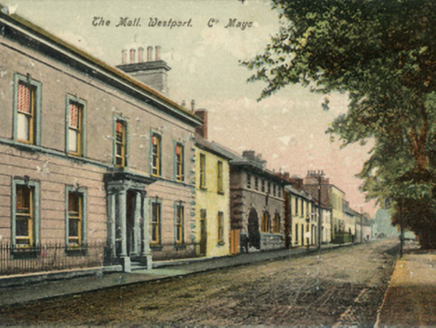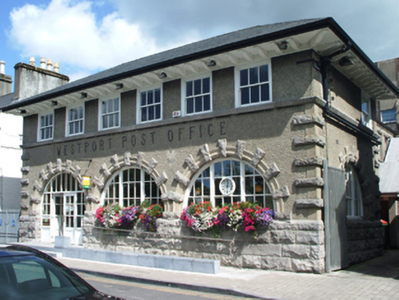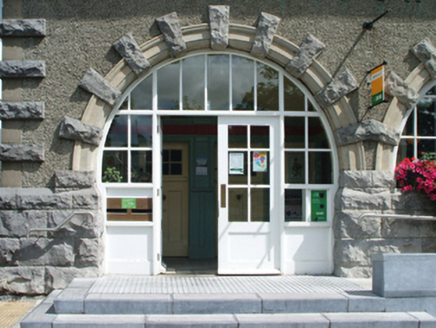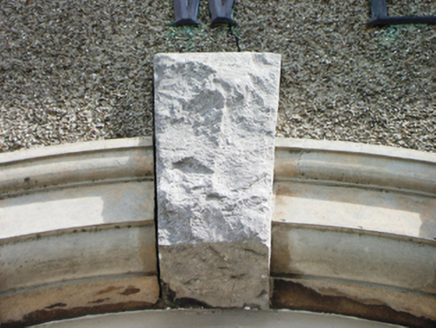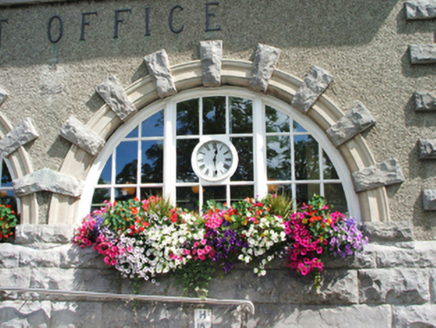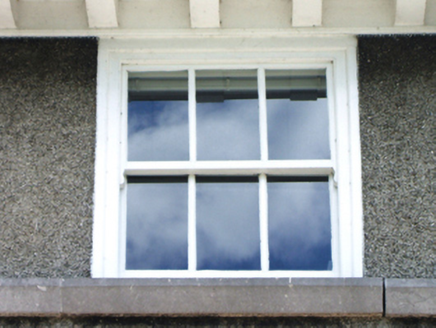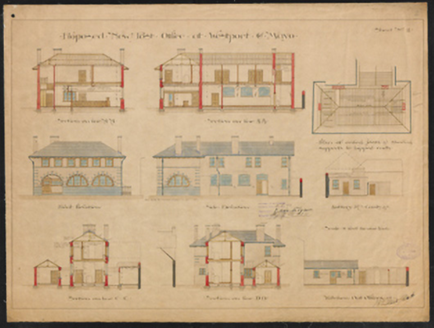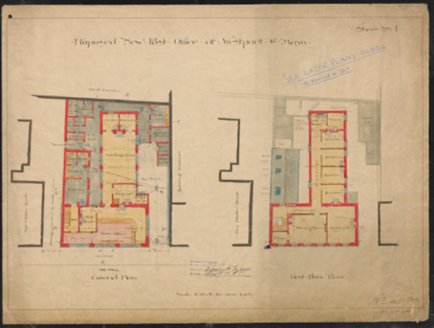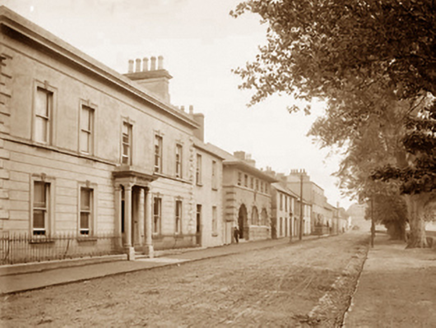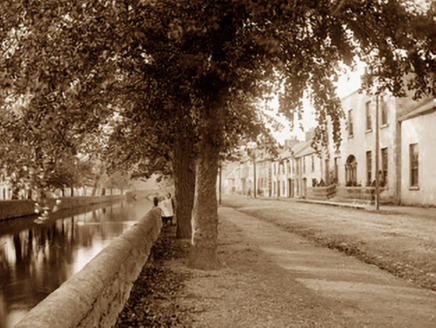Survey Data
Reg No
31212049
Rating
Regional
Categories of Special Interest
Architectural, Artistic
Original Use
Post office
In Use As
Post office
Date
1895 - 1905
Coordinates
99904, 284471
Date Recorded
31/07/2008
Date Updated
--/--/--
Description
Detached three-bay two-storey post office, designed 1899; built 1899-1901; opened 1901, on a rectangular plan with single-bay two-storey side elevations. Hipped slate roof with clay ridge tiles, and cast-iron rainwater goods on timber eaves boards on overhanging eaves having timber consoles retaining cast-iron octagonal or ogee hoppers and downpipes. Roughcast walls on drag cut-limestone chamfered cushion course on tuck pointed rock faced limestone ashlar base with rock faced cut-limestone-detailed rendered "bas-relief" strips to corners. Series of three round-headed openings (ground floor) with moulded archivolts centred on rock faced cut-limestone keystones framing fixed-pane timber fittings. Square-headed window openings (first floor) with dragged cut-limestone sill course, and concealed dressings framing three-over-three timber sash windows having part exposed sash boxes. Interior including (ground floor): vestibule retaining carved timber surrounds to door openings framing glazed timber panelled doors. Street fronted with concrete brick cobbled footpath to front.
Appraisal
A post office erected to a design signed (1899) by John Howard Pentland (1855-1919), Principal Surveyor for the Board of Works (appointed 1891; retired 1918), widely regarded as a particularly important component of the built heritage of Westport with the architectural value of the composition, one sharing motifs in common with the Pentland-designed Castlebar Post Office (1902-4; see 31209008), confirmed by such attributes as the compact plan form; the dramatic diminishing in scale of the openings on each floor producing a graduated visual impression; the robust rock faced dressings demonstrating good quality workmanship; and the decorative timber work embellishing an oversailing roofline. Having been well maintained, the elementary form and massing survive intact together with substantial quantities of the original fabric, both to the exterior and to the interior, thereby upholding the character or integrity of a post office making a pleasing visual statement overlooking the canalised Westport or Carrowbeg River.
